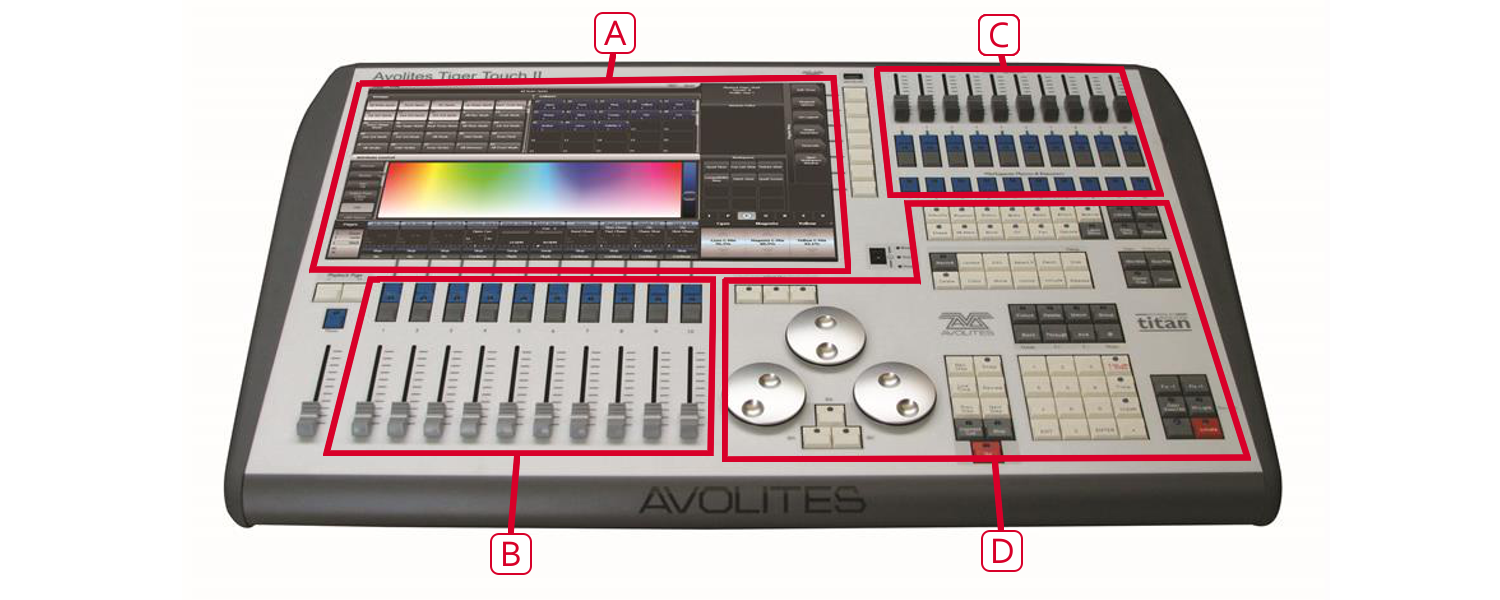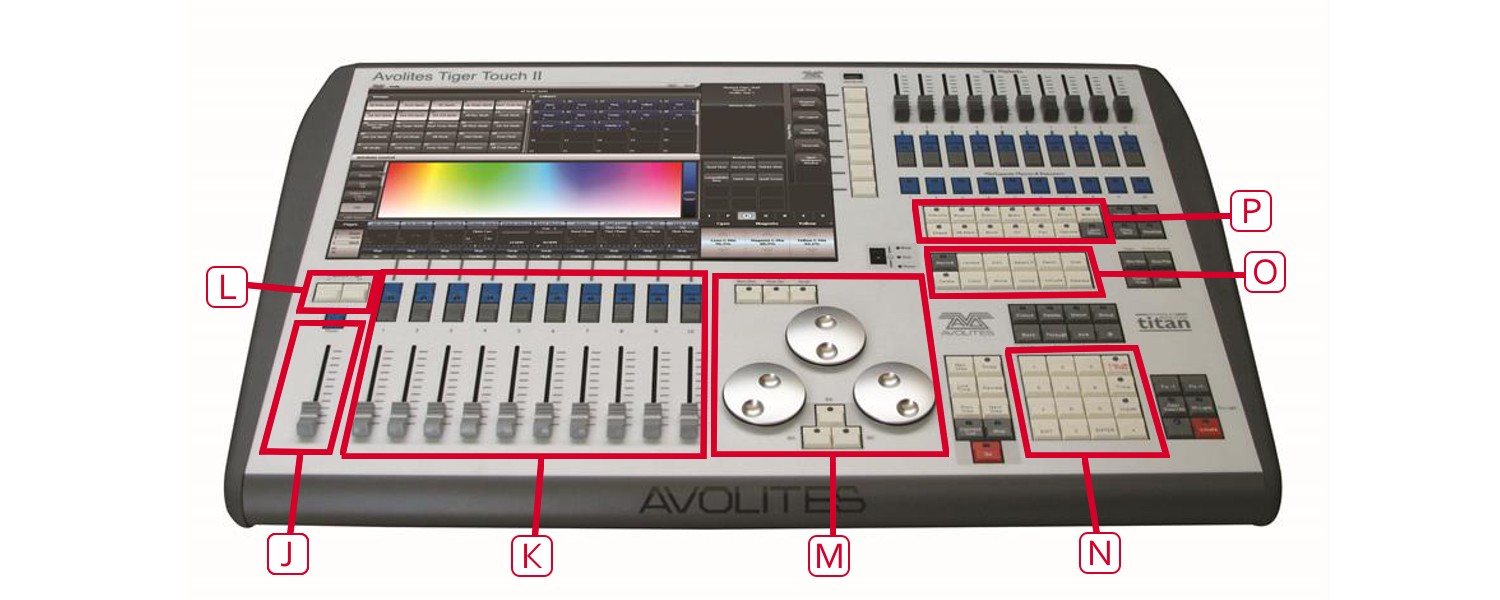Tiger Touch

The Tiger Touch has four main control areas:
A The Touch screen contains fixture, palette and group select buttons. It also shows legends for the playback faders and shows the current menu page and softkey buttons on the top right of the screen.
B The Playback faders select and control cues and programs
C The Preset playbacks give you additional (unpaged) playbacks and the macro buttons allow storage of frequent key sequences.
D The Programming and setup controls configure and program the console.
The first version of the Tiger Touch has a slightly different front panel layout.
The Main Controls

E The Workspace windows on the touch screen contain touch buttons for fixtures, palettes, groups, playbacks, macros and more. You can also set fixture attributes and show information windows.
F The System display and menu area of the touch screen is the nerve centre of the console and shows you what is going on. This part of the display shows various screens of information depending on what you are currently doing.
G The Menu Softkeys (labelled A - G) are used to select control options. The display next to the buttons shows what each one will do. The options for each key change depending on what the console is doing. Softkey commands are shown in the manual like this:Edit Times
H The Preset Playbacks are used to store and play back cues or chases that you need frequently. These playbacks are not changed by the page select buttons, but you can assign macro buttons to change pages.
I The Macro Buttons store frequently used sequences of keypresses which can be replayed with a single button press. Playbacks can also be stored here.

J The Master fader can be configured to control the overall output of the console (it is disabled by default).
K The Playback faders are used to store and play back cues or chases.
L The Page Select buttons let you change to a different page of playbacks. The touch screen above the faders shows information about each playback.
M The Control wheels are used to set control values (attributes) for the fixtures, and to set chase speeds and fades. The touch screen above the wheels shows information about the attributes being controlled. Press the Window Scroll Button to switch the wheels into scroll mode - this is used to move a selection box around the screen when editing.
N The Numeric keypad and other control buttons are used to enter values and change controls on the console.
O The Function buttons are used to carry out functions such as storing cues, copying, saving to disk, etc. These buttons have lights on to indicate when they are active.
P The Attribute select buttons are used to select which attributes of a fixture (e.g. colour, gobo, pan, focus) are going to be controlled using the Control wheels. The buttons have lights on to show you which attributes are active. The red button in the bottom right corner of the console allows you to locate fixtures, which sets them to a known start position while programming.

The Back Panel
All the connections required for the console are found on the back panel. Most are self-explanatory.
Q The power switch above the mains inlet is used for isolating the power supply. Do not turn the console off using this switch, use the power switch on the front panel to ensure the software is correctly shut down.
R The Panel reset switch may be pressed to restart the front panel electronics if something odd happens with the switches and faders. The main board will continue running but the DMX output will be interrupted until the restart is completed.
S The console provides four DMX outputs on XLR, SMPTE input and MIDI in/out connections.